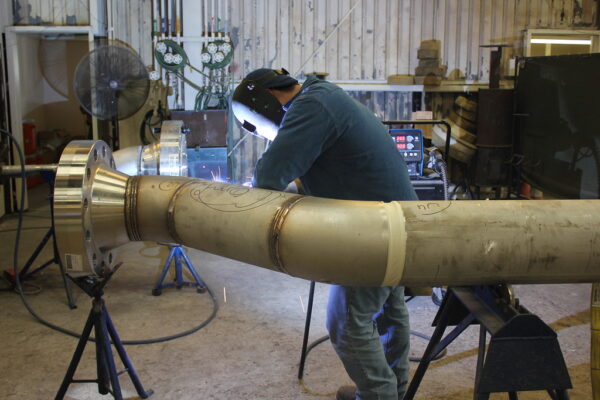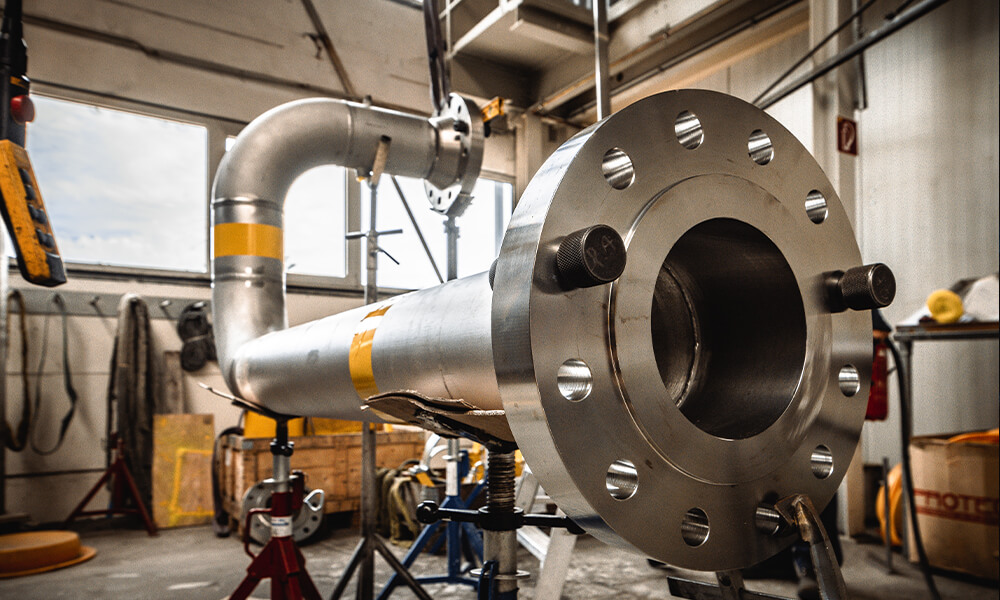The use of pre-fabricated piping spools has become a standard practice in industries such as oil and gas, petrochemicals, power plants, and construction, due to their efficiency and cost-effectiveness. Pre-fabrication allows for the majority of the piping system to be constructed off-site, reducing on-site labor and installation time. This process also ensures higher quality control and precision. Let’s explore the step-by-step process of pre-fabricated fittings, from design to installation.
Design and Engineering
The process begins with careful design and engineering to create the optimal piping system.
Key Steps in Design:
Piping Layout: The layout design is based on the requirements of the overall plant or facility. It includes determining the type, size, and routing of pipes based on the fluid being transported, flow rates, and other operational parameters.
Selection of Materials: Materials are selected based on factors like pressure, temperature, and the type of fluid. Stainless steel, carbon steel, and alloys are common choices for pre-fabricated spools.
Stress and Flexibility Analysis: Engineers analyze stresses, thermal expansion, and potential vibrations to ensure that the spools will perform safely under operational conditions.
Drafting the Spool Drawings: Detailed spool drawings are created, outlining the dimensions, pipe fittings, flanges, valves, and any other components that will be part of the spool.
Material Procurement
Once the design is finalized, the next step is procuring the necessary materials for fabrication. This includes:
Pipes: Pipes are sourced according to the material specifications and sizes detailed in the design.
Fittings and Flanges: Elbows, tees, reducers, and flanges are selected to match the design parameters.
Supports and Hangers: Additional components such as supports, hangers, and brackets are chosen based on the pipe layout.
Material procurement also includes verifying quality certifications and ensuring that the materials meet industry standards and project-specific requirements.
Fabrication and Assembly

With materials in hand, fabrication is the next crucial step. This process involves cutting, fitting, welding, and assembling the piping components into pre-fabricated spools.
Key Fabrication Steps:
Cutting and Measuring: Pipes are cut to the specified lengths, and fittings are carefully measured and marked for precision.
Welding: Pipe sections are welded together to form the spool. Experienced welders use various welding techniques like TIG, MIG, or stick welding, depending on the material and joint requirements.
Fitting Installation: Flanges, valves, and other components are installed onto the spools. These are either welded or bolted, depending on the design.
Quality Control: During and after fabrication, the spools undergo strict quality control checks, including visual inspections and tests for defects such as cracks or leaks. Non-destructive testing (NDT), like ultrasonic or radiographic testing, may be used to detect internal defects.
Pre-Assembly and Testing
Before the piping spools are shipped to the construction site, pre-assembly and testing are essential steps to ensure everything functions as expected.
Assembly of Components: If necessary, various spools are assembled together to check the complete fitment, alignment, and connection with other system components.
Pressure Testing: The spools are subjected to pressure tests to verify their ability to handle the designed operational pressures. This may include hydrostatic tests or pneumatic tests, depending on the system’s nature.
Transportation and Delivery
Once the spools have been fabricated and tested, they are transported to the installation site. Depending on the size and complexity of the spools, this can involve:
Packaging and Protection: The spools are packaged carefully to avoid damage during transport. Protective coverings or coatings are applied to prevent corrosion or scratches.
Logistics Coordination: The delivery is carefully coordinated to ensure that the spools arrive at the right time and location for installation.
Installation and Integration
At the installation site, the pre-fabricated piping spools are integrated into the larger piping system. The installation process includes the following steps:
Key Installation Steps:
Unloading and Inspection: The spools are unloaded and inspected for any damage during transport. Any issues found must be addressed before proceeding with installation.
Positioning and Alignment: The spools are positioned according to the layout drawings and aligned with the existing pipework. Proper alignment is crucial to ensure smooth integration and prevent stress on the joints.
Joining Spools to Existing Piping: The pre-fabricated spools are connected to the rest of the system using flanges, welding, or other joining methods. This includes ensuring tight seals and leak-free connections.
Final Testing: Once installed, the entire system is again subjected to pressure testing, ensuring that the integrated spools meet operational requirements.
Final Inspections and Quality Assurance
After installation, the entire system undergoes a final inspection to ensure it meets all project specifications, codes, and safety standards. This includes:
- Visual Inspections: To check for any visible defects in the installation.
- Leak Testing: Ensuring all connections are secure and leak-free.
- Documentation: Completing all necessary documentation, including inspection reports, certificates, and as-built drawings, which are critical for regulatory compliance and future maintenance.
Benefits of Using Pre-Fabricated Piping Spools
The pre-fabrication process offers numerous advantages, including:
- Time Efficiency: Most of the work is done off-site, reducing the time required for installation at the site.
- Quality Control: Spools are fabricated in controlled environments, ensuring better consistency and precision.
- Reduced Labor Costs: With much of the fabrication completed off-site, there is less labor needed at the installation site.
- Minimized Disruptions: Pre-fabricated spools reduce on-site disruptions and can be installed quickly, even in challenging environments.
Final Thoughts
The pre-fabricated piping spool process is an intricate but highly efficient method for creating complex piping systems. From meticulous design and fabrication to precise installation and testing, this process ensures a reliable, high-quality piping system that minimizes installation time and enhances overall project efficiency. By embracing this approach, industries can ensure robust, long-lasting infrastructure that meets operational demands.

